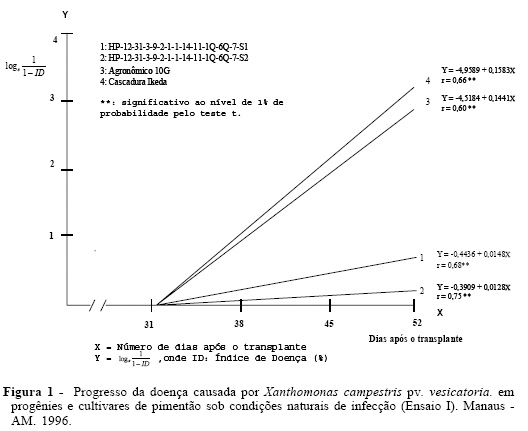The cultivation of pepper is decling in the floodplain ecosystem of the Solimões River, near Manaus, Amazonas, Brazil, because the frequence of severe epidemics of bacterial spot caused by X. campestris pv. vesicatoria (Doidge) Dye. The INPA pepper improvement program for resistance to X. campestris pv. vesicatoria was initiated in 1976. In this paper is reported results of three experiments in upland and floodplain ecosystems in Amazonas, in which F13 and F14 progenies of a interspecific cross of Capsicum annuum and C. chinense (named HP-12) were evaluated for resistance to X. campestris pv. vesicatoria and fruit yield potential under natural conditions of plant infection. When the host population is composed of resistant and suceptible cultivars epidemic patterns fit the monomolecular model of disease progress and high levels of resistance, conferred by a genotype, were due to its capacity to restrict the velocity of disease progress. The progenies selected by the program have higher levels of resistance to the pathogen and higher yield potential than control, the susceptible cultivar Cascadura Ikeda. The potential for fruit yield is related to the host's level of resistance. Also C. chinense is an important source of genetic resistance to X. campestris pv. vesicatoria for the pepper genetic improvement program.
Capsicum annuum; C. chinense; bacterial spot; genetic resistance




